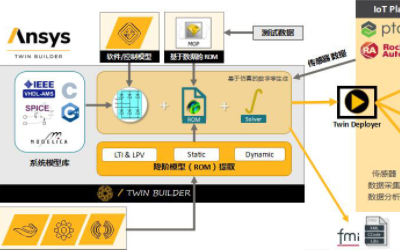CRM Is Not CRM in China: Five Challenges for the Industry in 2006 and Beyond
As we begin a new year, here's how I see the shape of CRM in Greater China in terms of five challenges for the market.
It is always interesting to compare CRM in Greater China and CRM in the
As we begin a new year, here's how I see the shape of CRM in Greater China in terms of five challenges for the market.
Data quality
The credit card penetration rate is under 1 percent in
Data quality in
If you have a business in
Disparity in prosperity
The difference in the gross domestic product of the first-tier Chinese provinces is 13 times that of the bottom-tier provinces, according to the National Bureau of Statistics of China and International Monetary Fund. This is compared to
More and more foreign enterprises realize they're not only entering into a big country, but also they're entering into a European-style market with diverse and dispersed segments. Consider the different levels of wealth, customer maturity, infrastructure, culture, languages, customs of different regions in
Tough (but not impossible) road for local enterprises
Six foreign and four Chinese brands ranked in the top 10 of advertisers in 2004, according to Nielsen Media Research.
When you consider that, the competitive advantages of multinational corporations compared to local enterprises become a blur. In the past decades, the MNCs had the advantages of global branding, expertise and capital wealth over local enterprises. Nowadays, the gaps between the two are narrowing. With more and more capital influx from being listed in various stock market and more resources spent on building and enhancing brands; innovating new products with their own design; recruiting high profile professionals with global and MNC experiences, local enterprises are improving and expanding very quickly. On the other hand, the MNCs are gaining advantages in channel management while picking up local market knowledge. As the differences between local enterprises and multinational corporations lessen at the same time as customers are becoming more mature and expecting quality as well as low prices, companies large and small must focus on customer experience to win loyal customers and good profits.
Foreign vendors controlling all but niche industries
The reported sales revenue in 2004 of Oracle was $12 billion (in U.S. dollars); Siebel was $1.34 billion; and SAP was $2.8 billion. The top three Chinese software companies had a combined sales revenue of only $300 million or just 2 percent of the three foreign vendors, according to the Chinese Ministry of Information Industry.
Local vendors are too weak to compete with the foreign corporations, no matter which market segment you're talking about—even in many industry-specific areas. They are just too weak in R&D, branding and professional industry experiences. Big ticket projects will still be won by ERP-oriented CRM vendors, benefiting SAP and Oracle. However, there is some room for local vendors that specialize in some niche industries—like real estate, telecom, media—that require unique local experiences and relationships to break the ice and close the deal.
Perception of CRM as an application
CRM sales revenue in the
Just as people often mistakenly perceive only advertising builds a brand, quite a large portion of people still think CRM means software or even a call center. So what are the natural results? The truth is no brand could be built successfully if you focus only on advertising, and no successful CRM can be done if you focus only on software or the call center. My opinion is that the perception in








